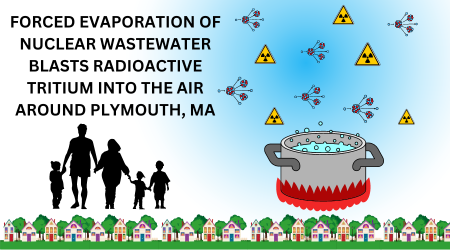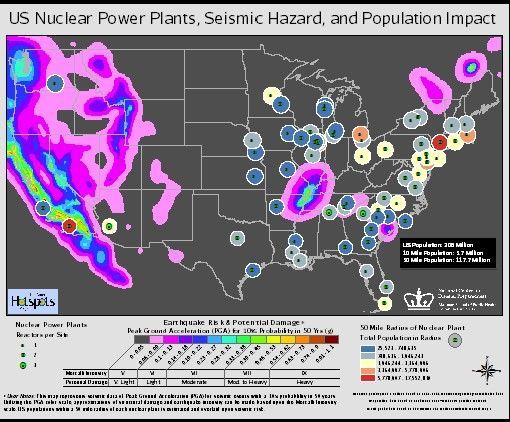3.8-Magnitude Earthquake Brings Renewed Focus on Seabrook Station's Cracking Concrete
- By C-10 Staff
- •
- 20 Feb, 2025
A recent earthquake shook Seabrook Station Nuclear Power Plant. With known concrete cracking issues, what is the outlook for nuclear safety at the plant?
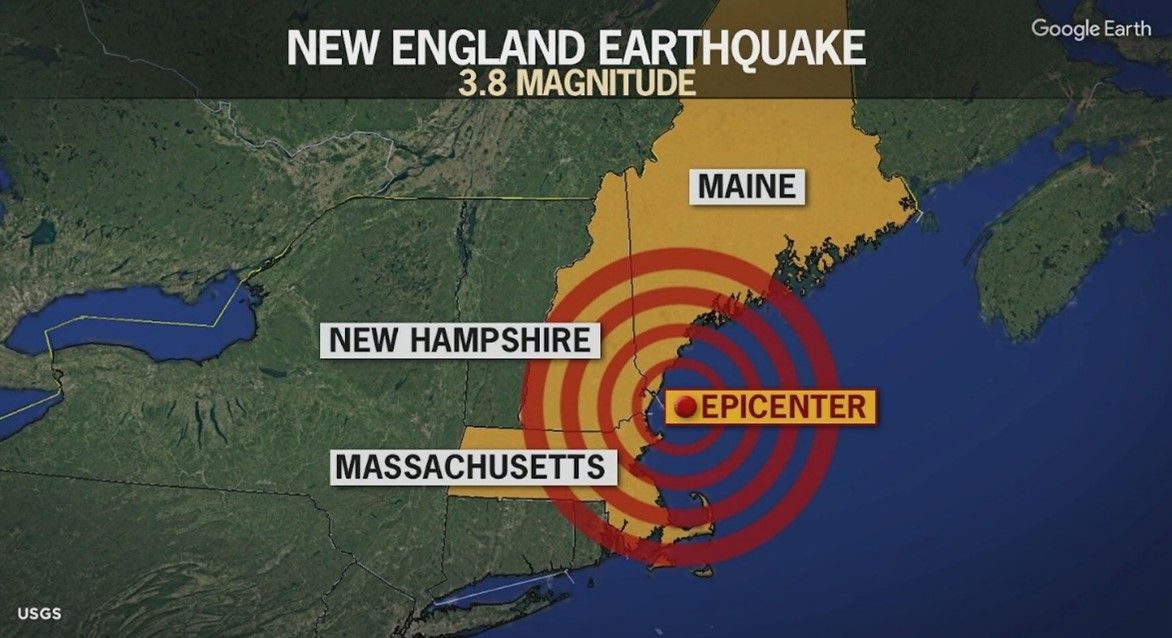
On January 27, 2025, a 3.8-magnitude earthquake struck off the coast of southern Maine, with the epicenter about 16 miles northeast of the NextEra Seabrook Station Nuclear Power Plant. By New England standards this was a noteworthy event, and shaking was felt throughout the Northeast—including at our C-10 offices in Amesbury, MA. Two smaller aftershocks also occurred in the days that followed the initial earthquake.
As an organization focused on nuclear safety at Seabrook, C-10 immediately sought to learn whether the nuclear plant was impacted by the earthquake. After 34 years in operation, Seabrook Station is an aging plant, with aging components, and aging infrastructure. This includes documented problems with concrete degradation, as C-10 highlighted after a prior earthquake in 2018. In 2019, C-10 obtained a successful ruling on a legal challenge for more robust monitoring of that same concrete problem.
Heightened damage risks from earthquakes were a key concern when C-10 pushed for more thorough concrete monitoring and studies at Seabrook Station. With this recent seismic event among the largest earthquakes our region has seen in decades, what are the possible implications for nuclear safety?
Assessing Impacts of the 1/27/25 Earthquake
Following the earthquake, C-10 quickly turned to our radiation-monitoring network, the only real-time system to monitor the effects of the radiological emissions from Seabrook Station. The C-10 monitoring stations provide live radiation data and will rapidly alert C-10 and public health officials if there are abnormally high radiation levels.
Fortunately, after the earthquake, the C-10 system reported that radiation levels had remained within the typical ranges. The chart below shows the levels of beta and gamma radiation detected throughout the day of the earthquake at the C-10 monitoring station located less than a mile from Seabrook Station:
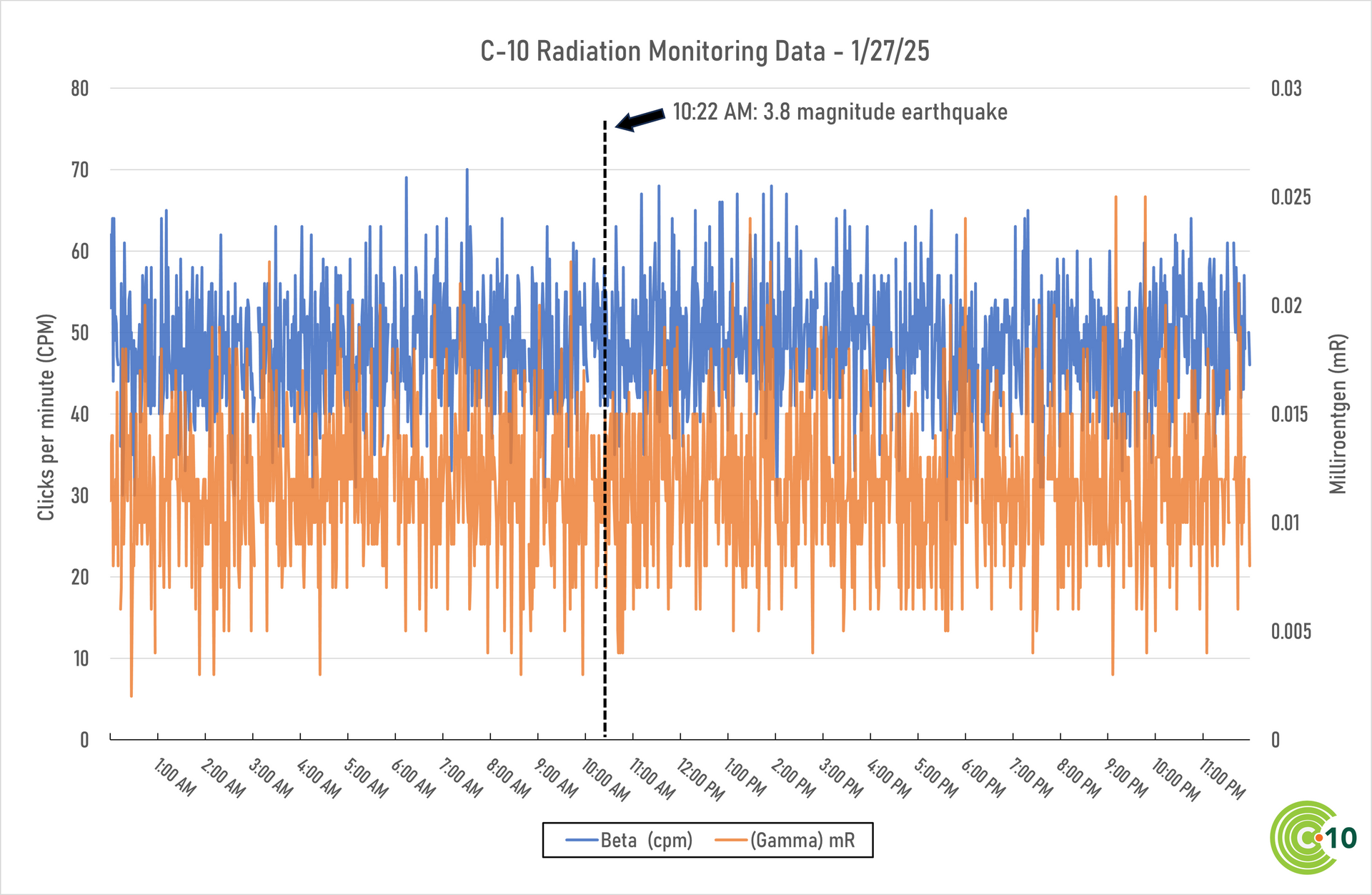
Additionally, minutes after the earthquake C-10 spoke with the Senior Nuclear Regulatory Commission (NRC) Resident Inspector stationed at Seabrook Station. He confirmed the plant would be following an established inspection process to review ground-motion sensors, in order to gauge if a closer inspection of possible damage to structures was prudent. Seabrook Station later released a statement which said that the earthquake “did not impact” plant operations.
Was Seabrook Station designed to withstand earthquakes?
U.S. nuclear plants are designed and built to withstand the most severe seismic hazards anticipated at that location. Additionally, nuclear plants have ground-motion sensors to capture data about the actual forces experienced by plant structures during earthquakes.
Following a seismic event, an earthquake response analysis is conducted to determine the next course of action. This analysis uses ground-motion data and plant design specifications to predict damage levels and quickly determine if operations need to be adjusted. There are three possible outcomes of this analysis:
- No action: ground-motion data was not significant enough to cause damage and no adjustments are called for
- Operating basis earthquake: data indicated movement was significant enough to warrant decreasing reactor power output, but the plant can remain operating
- Safe shutdown earthquake: data indicates the plant may have experienced damage, and steps will be taken to safely shut down the reactor while further assessments are made
Following the recent earthquake, it was determined that plant operations could continue as normal with no adjustments, indicating the ground motion detected was not expected to damage plant structures.
ASR Concrete Degradation at Seabrook Station
If you have been following C-10’s work in recent years, you understand that C-10 brought attention to a type of concrete degradation occurring at Seabrook Station known as alkali-silica reaction (ASR). This occurs when certain types of concrete aggregates expand due to water exposure. The expansion leads to cracks forming in the surrounding concrete. ASR is an ongoing reaction that advances over time, leading to further degradation. In large structures there is no way to fix this or reverse ASR, and it leads to a reduction in the strength of the damaged concrete that can lead to structures failing.
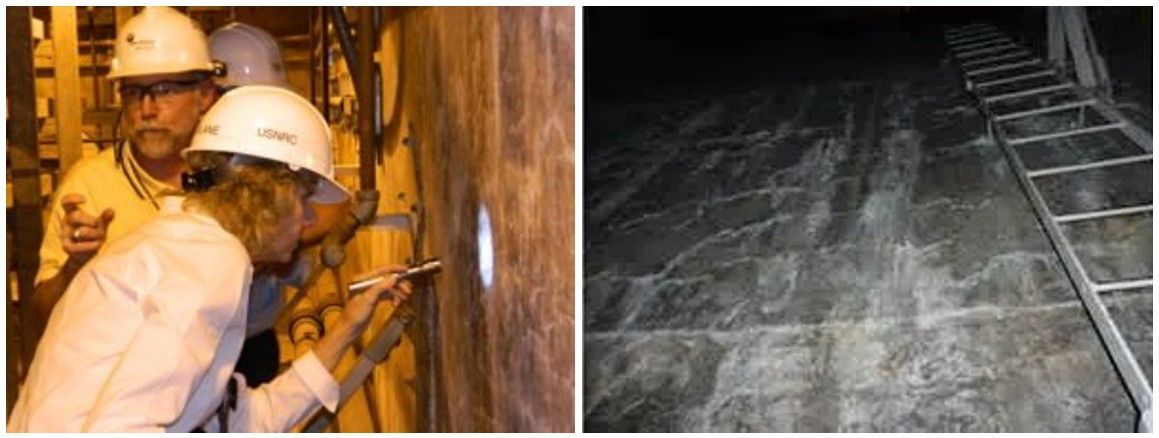
Seabrook is the only U.S. nuclear plant known to have ASR, and we know it is present in critical plant structures, including the reactor containment dome. The containment dome is a major safety structure, and its integrity is vital to protecting both the public and environment from exposure to the high levels of radiation emitted by the nuclear reactor.
This is why C-10 has long urged that the utmost scientific rigor be applied by the plant owners and federal regulators in order to understand the impacts of ASR at Seabrook Station, including how ASR affects seismic resiliency.
Prior C-10 Efforts to Address ASR Safety Issues
C-10 has advocated to the NRC for greater ASR monitoring and impact assessments at Seabrook, including a technical presentation given to the NRC by an ASR-expert and C-10 advisor just recently in September of 2024. Before that, when Seabrook Station applied to renew their operating license through 2050, C-10 successfully petitioned the NRC to include more frequent ASR inspections and to add the use of ASR monitoring devices as part of the plant’s license renewal. In the last two years C-10 has also pushed back against proposed cuts to the plant’s emergency-response planning, and those efforts helped to block the worst parts of that proposal and saved certain critical roles from being reduced, eliminated, or resulting in increased response times.
These efforts do not do anything to correct the ASR itself, but they do mitigate some of the public-safety risks incurred by its presence. The combination of ASR and earthquakes at Seabrook Station creates a unique risk to public health and safety not present at other U.S. nuclear plants.
Unanswered Questions
What does all of this mean for ongoing safety at Seabrook and the communities surrounding it? While the plant has stated there was no damage from this earthquake initially, some key questions remain:
Did the earthquake further damage ASR-affected structures, particularly the containment dome?
We know ASR-afflicted structures have decreased rigidity, which reduces their ability to withstand forces brought on by earthquakes. Seabrook Station has installed extensometers throughout the plant to help measure the extent of ASR damage, and it is important to use that data to discern if there were any measurable changes following the recent earthquake.
Unfortunately, assessing damage to the containment dome may not be possible for over a year. Humans cannot enter the containment room while the plant is operational, due to dangerously high levels of radiation. The most likely opportunity for it to be assessed will be during Seabrook’s next refueling outage, which is currently scheduled for Spring 2026.
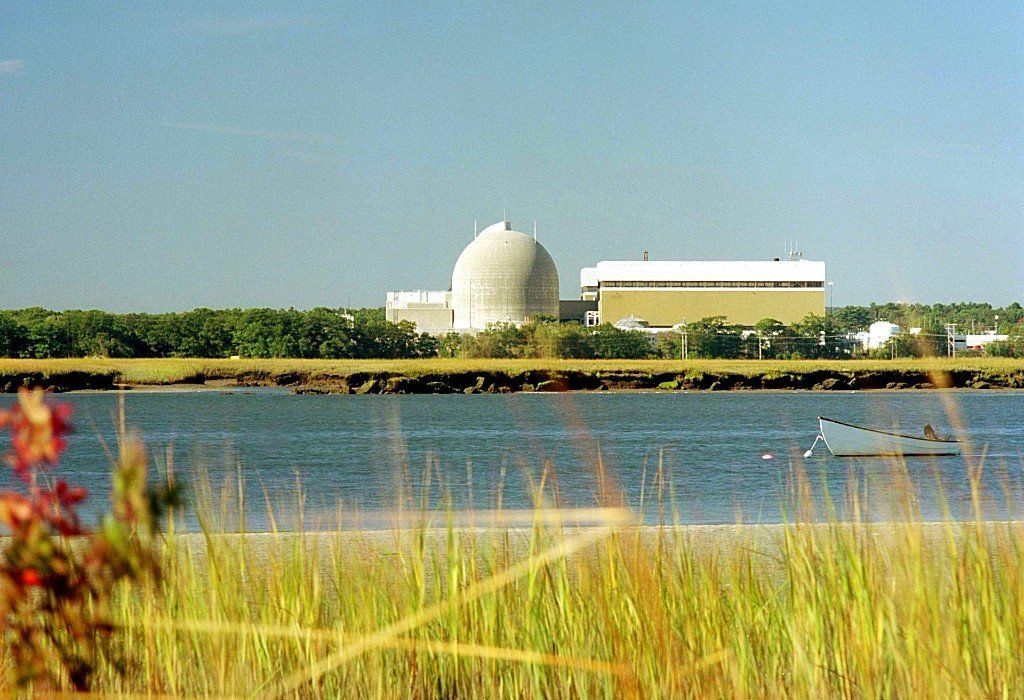
Are Seabrook Station’s seismic safety calculations still valid, given the ASR-weakened concrete?
The exact NRC formula for assessing a plant’s ability to withstand seismic events is withheld from the public under the justification of it being “proprietary or security-related,” but we have confirmed the NRC and the plant operator treat seismic events as though the plant’s structures enjoy the same building strength as when the plant was first built. However, since we now know that ASR is present at Seabrook Station, does this method still reflect an accurate measure of what could be withstood?
Since ASR degradation is ongoing and known to weaken structures, we were surprised ASR's discovery did not lead to NextEra, Seabrook's owners, nor the NRC to revise initial measures of building strength. It is reasonable to expect cracking concrete would cause some reduction in the plant's ability to withstand earthquakes, and we feel it would be beneficial to assess the current strength of plant structures.
Will more earthquakes hit Seabrook Station?
It is difficult to precisely predict future earthquakes, both in terms of time and magnitude. We do know there are several active fault zones throughout New England that have intermittently experienced small-to-medium earthquakes in recent decades, with detectable shaking experienced at the plant.
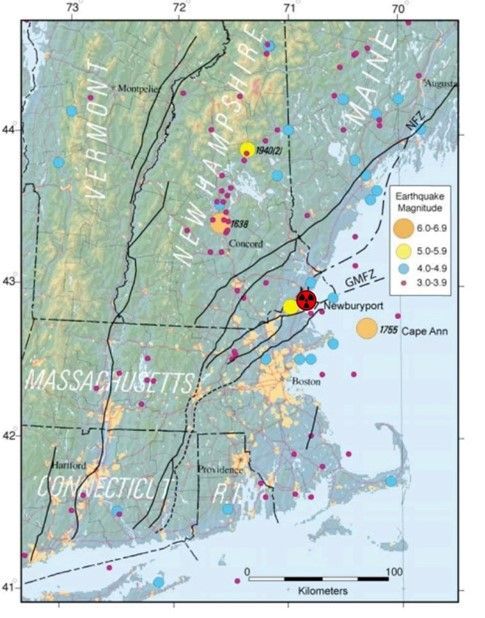
The above map shows faults and historic earthquakes details for New England, as well as proximity to where Seabrook Station is located today. Again, it is impossible to predict with certainty when or where earthquakes will occur. However, Seabrook Station is currently licensed to operate until 2050. Given historic seismic patterns, it is likely to experience additional seismic activity if it operates through that time.
Next Steps for C-10
C-10 has experience using legal and political channels to elevate safety issues at Seabrook Station when local communities are placed at an increased risk. On the topic of seismic events in the face of the plant’s ASR concrete degradation, C-10 is preparing to take a number of formal actions this year. There are recently published studies by scientific institutions that support a re-analysis of how the ASR problem is being measured and mitigated at Seabrook Station. There are world-class scientists in this field who have contacted C-10 in an effort to bring an evidence-based analysis to the NRC for immediate and thorough action.
When it comes to a nuclear plant, we must make safety decisions based on the realities demonstrated by the evidence, rather than let economics or politics allow leaders to take a blind eye to these critical issues at our aging local nuclear plant.
Sources
Saouma, V. E., & Hariri-Ardebili, M. A. (2019). Seismic design criteria for nuclear power plants. Nuclear Engineering and Design, 345, 1–10. https://doi.org/10.1016/j.nucengdes.2018.11.020
Tuttle, M. P. (2002). Re-evaluation of earthquake potential and source in the vicinity of Newburyport, Massachusetts (Final Technical Report). U.S. Geological Survey. https://earthquake.usgs.gov/cfusion/external_grants/reports/01HQGR0163.pdf
U.S. Nuclear Regulatory Commission. (n.d.). Appendix S to Part 50—Earthquake engineering criteria for nuclear power plants. U.S. Nuclear Regulatory Commission. Retrieved February 5, 2025, from https://www.nrc.gov/reading-rm/doc-collections/cfr/part050/part050-apps.html
U.S. Nuclear Regulatory Commission. (n.d.). Backgrounder on seismic reviews at U.S. nuclear power plants. U.S. Nuclear Regulatory Commission. Retrieved February 1, 2025, from https://www.nrc.gov/reading-rm/doc-collections/fact-sheets/fs-seismic-issues.html
WMUR. (2025, January 27). Earthquake shakes New Hampshire. WMUR. https://www.wmur.com/article/new-hampshire-earthquake-january-27-2025/63571487

Our action is only possible with community support. To get updates on our work and initiatives, please subscribe to our mailing list. If you would like to support C-10's ongoing nuclear safety work please consider donating to our organization. We are deeply grateful for any support! Please reach out to info@c-10.org with any questions.
Follow us

